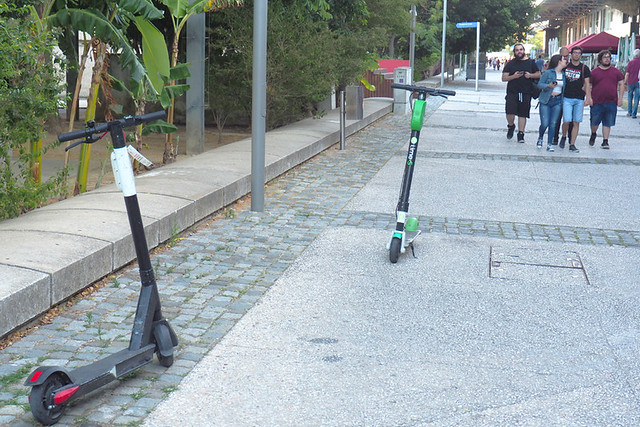Caring for our environment is, quite rightly, headline news.
It’s effortless to hit a thumbs up on facebook, a retweet on Twitter and share posts which show others just how much we care about our planet. We can do it without expending any energy whatsoever. It’s easy to be an eco-warrior when you don’t need to leave the house and the only weapon you need is a keyboard or a smartphone.
If those words sound as though they’re laced with cynicism, it’s because they are. I’m cynical because too often I don’t see enough people walking the talk.

Take Lisbon around twelve months ago. Showing visiting friends around the city we constantly had to step over discarded E-scooters on already too narrow pavements. Occasionally we had to move into the street just to be able to get around mini mountains of scooters which had simply been abandoned. The place was a mess. There were riderless E-scooters everywhere. People, mostly visitors, were simply leaving them as soon as they’d had enough, it didn’t matter where that was. It was difficult enough for us to walk some streets, for people with pushchairs or wheelchair users it must have made negotiating Lisbon’s cobbled pavements virtually impossible.
The problem was twofold. The first was the city was flooded with E-scooters. Numerous companies saw the opportunity to make money and six months after they were introduced in September 2018 there were at least 4000 of them on the streets. The second, and main problem, was the way people were using (abusing) them.

As well as being a nuisance and an eyesore, there were worse consequences than them simply being an inconvenience. Irresponsible usage was leading to accidents. Unsurprisingly, residents complained about the impact on their city as authorities were faced with a rapidly growing problem they hadn’t seen coming.
By this point other cities around Europe had started to wake up to the problems which accompanied this supposedly ‘green’ mode of urban transport. Madrid initially banned them but allowed them back on the streets at a later date; a Parisian politician published angry Tweets about them; and Porto’s politicians talked about learning from the mistakes of the Portuguese capital by implementing tighter regulations.

To be fair to Lisbon, the authorities acted quickly, clamping down on scooter companies to ensure they took more responsibility for the management of the E-scooters they were renting out, and charging them for their removal by municipality services when they’d been abandoned for longer than a specific time period. This latter measure cost companies €17,000 between February and June this year.
The result is that scooters are still very much a part of Lisbon’s streets, but they’re no longer the unsightly and sometimes dangerous ‘litter’ they were at the end of last year. The last couple of times we visited Lisbon, the city looked a lot less cluttered than it did last December. Companies and, subsequently, users have ‘cleaned up’ their act.

The lesson here is that even with a product which is viewed as being environmentally friendly you can’t always trust people to behave responsibly; that’s the X-factor which has caught cities around the world by surprise. It’s not really the E-scooters themselves which were the problem in Lisbon’s case. It was those users who treated who scooters as a ‘holiday’ plaything and who didn’t respect the city as being a place where people live and work… or respect the environment for that matter.




Be the first to comment